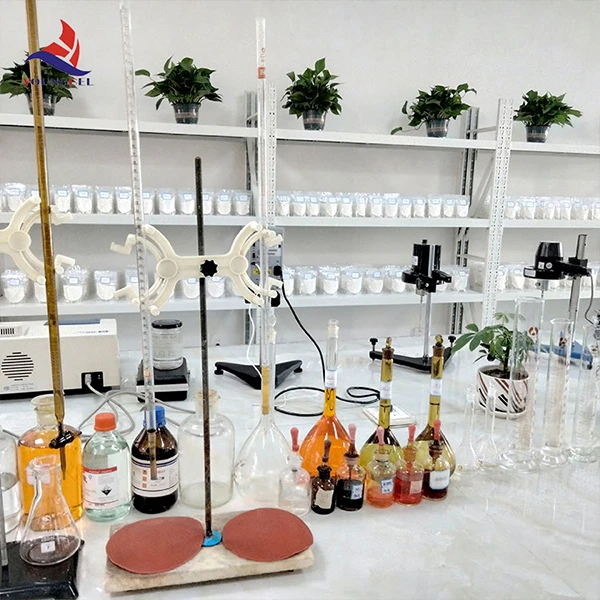The Role of HPMC in Chemical Adhesives
Hydroxypropyl Methylcellulose (HPMC) is a widely used polymer that plays a vital role in the formulation of chemical adhesives. As a cellulose ether, HPMC is known for its excellent binding, film-forming, and thickening properties, making it an essential ingredient in various adhesive applications. In this article, we will explore the properties of HPMC, its role in chemical adhesives, and the benefits it offers in adhesive formulations.
Properties of HPMC
HPMC is a non-ionic, water-soluble polymer derived from cellulose. Its chemical structure consists of hydroxypropyl and methyl groups, which enhance its solubility and provide excellent rheological properties. One of the key features of HPMC is its ability to form stable gels and emulsions, making it a highly versatile polymer in various industries. It is also known for its thermal stability, which allows it to withstand different processing conditions without losing its adhesive properties.
Applications of HPMC in Chemical Adhesives
The adhesive industry benefits significantly from HPMC’s unique properties. It is commonly used in the formulation of tile adhesives, wall adhesives, and other construction-related bonding agents. One of the primary functions of HPMC in these applications is to improve the workability of the adhesive. By increasing the viscosity of the formulation, HPMC allows for better application and spreading of the adhesive, providing a more consistent layer for bonding.
Additionally, HPMC contributes to the adhesion strength. Its film-forming ability ensures that once the adhesive is applied, it creates a strong bond as it dries. The polymer forms a continuous film that enhances the mechanical interlocking of the adhesive with the substrate, leading to superior adhesion performance. This is particularly important in construction applications where the strength and durability of the bonds are crucial.
Moreover, HPMC acts as a stabilizer in aqueous-based adhesives. It helps to prevent the settling of solid particles, allowing for uniform mixtures. This property is important for maintaining the quality of the adhesive during storage and application, ensuring that users achieve consistent results.
chemic adhes hpmc

Benefits of Using HPMC in Adhesive Formulations
The incorporation of HPMC in adhesive formulations offers several advantages. Firstly, its biodegradability aligns with the growing demand for environmentally friendly products. As industries move towards sustainable practices, using natural polymers like HPMC can significantly reduce the environmental impact of chemical adhesives.
Secondly, HPMC provides excellent water retention properties. This feature is particularly beneficial in construction adhesives, as it allows for longer working times before the adhesive dries, giving users ample time for application and adjustment. Extended working time is essential in many construction scenarios, where precision is required.
Furthermore, HPMC is compatible with a wide range of other raw materials, enhancing its versatility. It can be formulated with various fillers, pigments, and additives without compromising performance. This compatibility makes it easier for manufacturers to create customized adhesive solutions that meet specific application needs.
Finally, the use of HPMC in chemical adhesives often results in improved overall performance. Adhesives formulated with HPMC display better adhesion, flexibility, and resistance to various environmental factors, making them more reliable for long-term applications.
Conclusion
In conclusion, Hydroxypropyl Methylcellulose (HPMC) is a crucial ingredient in the formulation of chemical adhesives. Its unique properties, such as water solubility, film-forming ability, and compatibility with other materials, make it an invaluable asset in the adhesive industry. As demands for sustainable and high-performance adhesives continue to grow, the role of HPMC will likely expand, contributing to innovative adhesive solutions that meet both environmental and performance standards.
-
Rdp Powder: Key Considerations for Wholesalers in the Building Materials IndustryNewsJul.08,2025
-
Key Considerations for Wholesalers: Navigating the World of Hpmc - Based ProductsNewsJul.08,2025
-
Hpmc Detergent: Key Considerations for WholesalersNewsJul.08,2025
-
Key Considerations for Wholesalers: China Hpmc For Tile Adhesive, Coating Additives, Concrete Additives, and MoreNewsJul.08,2025
-
Crucial Considerations for Wholesalers: Navigating the World of Construction MaterialsNewsJul.08,2025
-
Key Considerations for Wholesalers Sourcing Additive For Cement, Additive For Concrete, Additive For Putty from Additive Manufacturer Shijiazhuang Gaocheng District Yongfeng Cellulose Co., Ltd.NewsJul.08,2025




